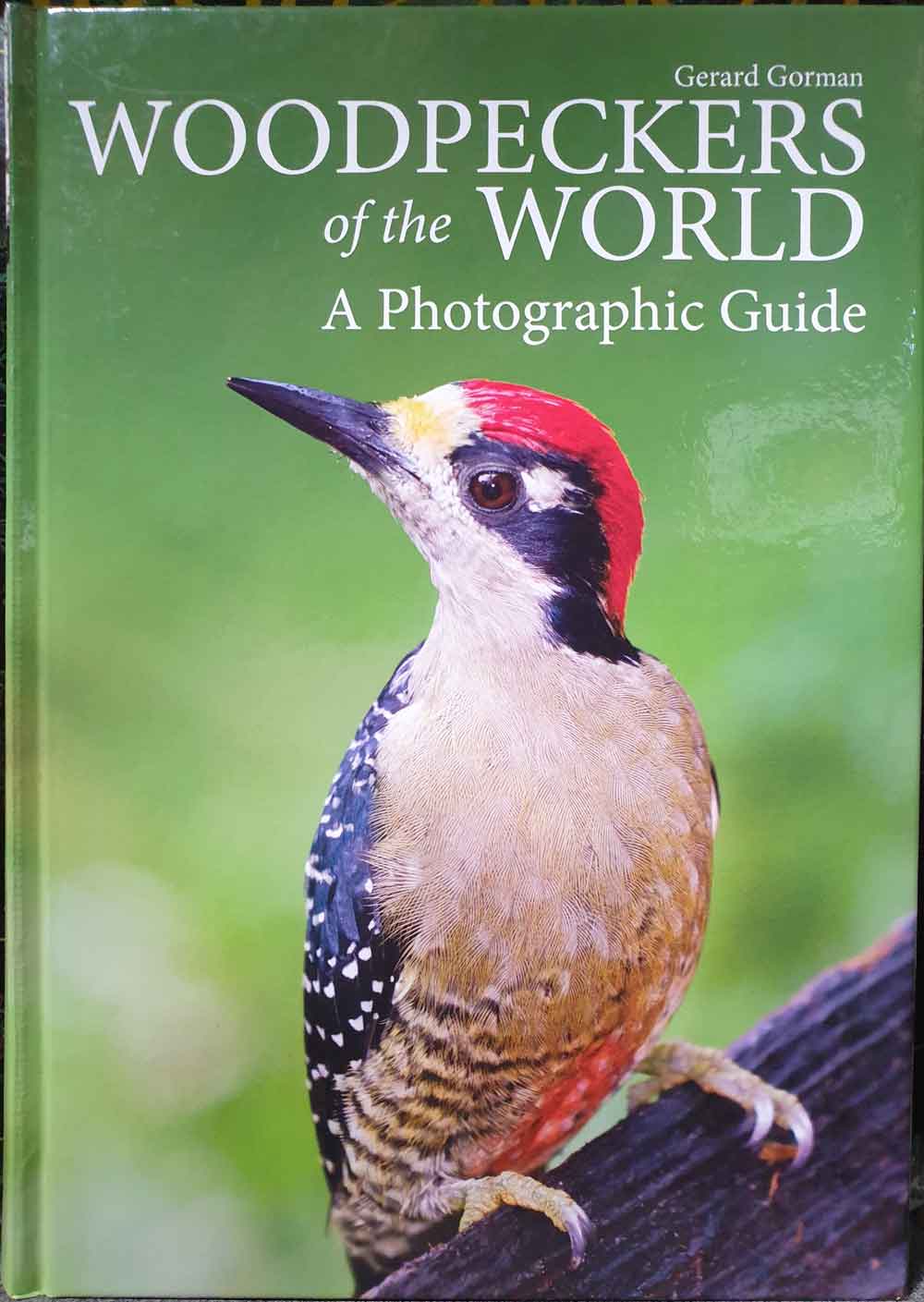I really like woodpeckers. This large, widespread group of around 240 living species includes the wrynecks, piculets and true or typical woodpeckers and includes species ranging from 7 to 60 cm in length. Woodpeckers are famous for their wood-excavating specialisations and ability to cling and climb on vertical substrates, but they’re diverse and not all species have these features. Here, I’ll resist the urge to talk about the birds that much and will instead provide brief comments on some of the best books written on these charismatic and fascinating animals.
Caption: this is one of the two woodpecker species I see on a regular basis: Green woodpecker Picus viridis (this photo from March 2016). All my photos are bad. Image: Darren Naish.
Winkler et al.’s Woodpeckers: A Guide to the Woodpeckers, Piculets and Wrynecks of the World. Winkler et al. (1995) is the woodpecker instalment in the famous Pica Press book series: these books feature an introductory section on the anatomy and systematics of the group concerned, a colour plate section (in this case, with art by David Nurney), and a species-by-species text section. The book is definitive and I’ve used it a lot. The text summarises knowledge on range, identification, habits, foot, breeding and more, and references are provided.
Like most people seriously interested in birds, I’ve amassed a decent collection of the Helm/Pica Press books in the same series, but I’m some way from owning all of them. Insert typical complaint about recently published bird books being prohibitively expensive.
Caption: the Helm/Pica Press bird books (oops, plus a few others) in the Tet Zoo Towers library. Image: Darren Naish.
Alexander Skutch’s Life of the Woodpecker. Skutch (1985) is a large (near ‘oversize’) hardback book, beautifully illustrated in colour throughout by the very good paintings of Dana Gardner. The book is separated into sections that cover the various aspects of woodpecker behaviour and ecology; there’s also a brief introduction to woodpeckers as a whole and a taxonomic list of recognised species at the back. Overall, the book is a good introduction to our knowledge of woodpeckers and everything about them, but it’s the artwork that makes it really worth getting.
Caption: at left, Fiery-billed aracari (Pteroglossus frantzii) vs Pale-billed woodpecker (Campephilus guatemalensis). At right, Imperial Campephilus imperialis. Just two of the many excellent illustrations by Dana Gardner included in Skutch (1985). Image: Dana Gardner/Skutch (1985).
Gerard Gorman’s Woodpeckers of the World. I absolutely love field guides, often for the art more for the utility, and in part because I love the convention of showing closely related species arranged together on the same plate. But despite those things, we still often need to see photographs of the animals we’re interested in. Gorman (2014) is a photographic guide to the world’s living woodpecker species, each being illustrated by at least a few photos (though read on). The text is good too: each species has a short section covering identification, range, variation and so on. The photos are excellent. It’s a must-have if you’re seriously interested in these birds.
Are all species illustrated by photos? What about the Ivory-billed woodpecker in the room… by which I mean: what about photos of the Ivory-billed Campephilus principalis and Imperial C. imperialis? No photos, only text.
Tim Gallagher’s Imperial Dreams. I reviewed this book at TetZoo back when it was new in 2013 (but good luck finding the article now; it’s been ruined by its hosters, like all stuff at ver 2 and ver 3). I’m not that great a fan of travelogue-type books on natural history, but I do really like Imperial Dreams. One of the world’s most spectacular woodpeckers is – or, was – the Imperial woodpecker of the Sierra Madre Occidental, a pine forest giant that seems to have dwindled to extinction somewhere between the late 1950s and … 1980s? 90s? No-one knows exactly when this bird went extinct, and its persistence was rumoured as recently as the 1990s.
Gallagher (2013) charts an effort to search for continuing traces for this species. A lot of information on the bird itself is included, but the human story relevant to the region is fascinating too. If you like woodpeckers, the book is well worth getting hold of. I should finish by adding that Gallagher also wrote The Grail Bird: Hot on the Trail of the Ivory-Billed Woodpecker, a volume I haven’t yet read.
Books on woodpeckers. There are others… Image: Darren Naish.
Woodpeckers have been covered several times on TetZoo, but - as usual (is this getting boring now?) - they’ve been ruined by removal of images at ver 2 (the ScienceBlogs years) and ver 3 (the SciAm years). Anyway…
Refs - -
Gorman, G. 2014. Woodpeckers of the World: A Photographic Guide. Firefly Books, Buffalo.
Skutch, A. 1985. Life of the Woodpecker. Ibis Publishing Company, Santa Monica.












